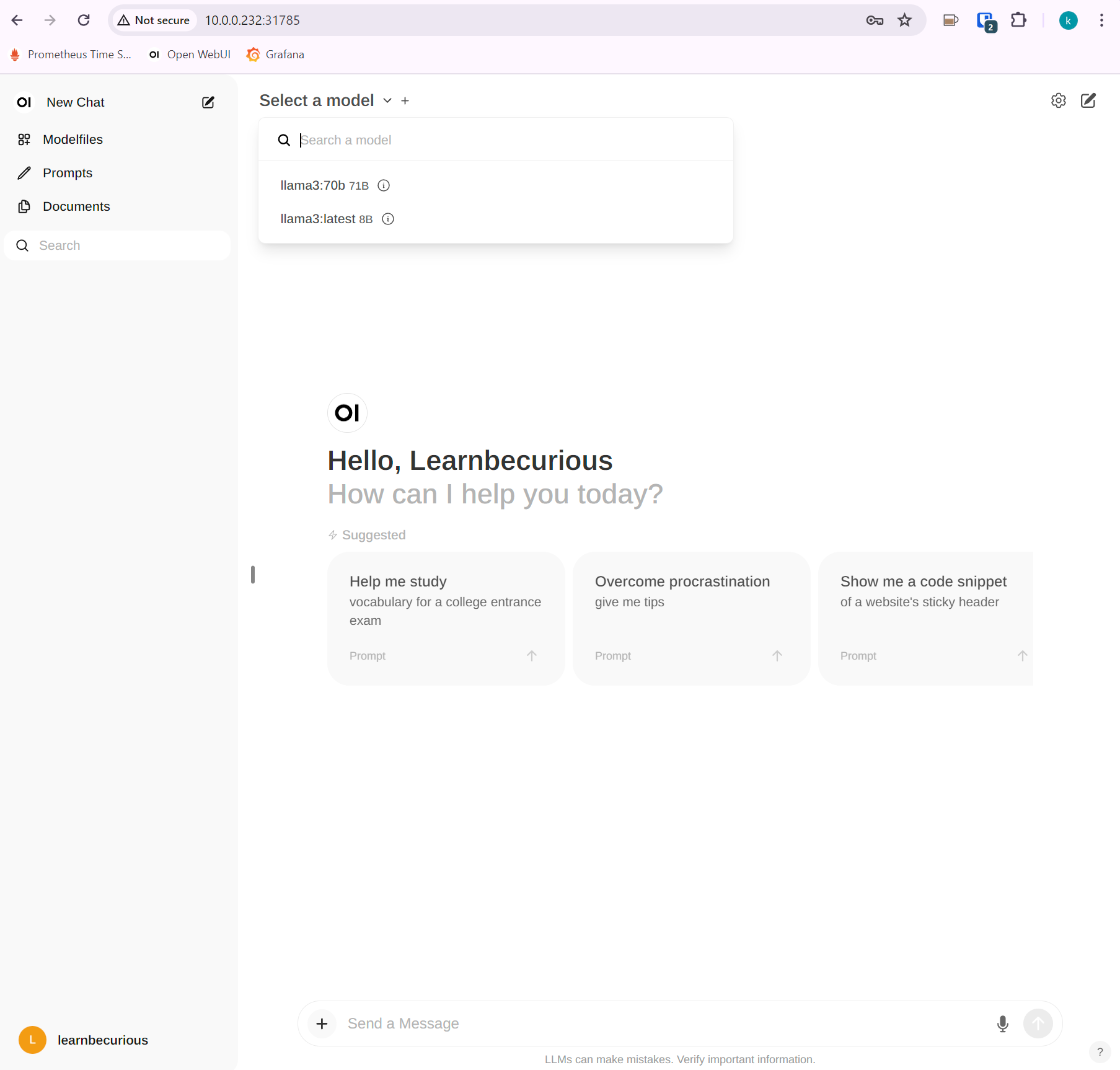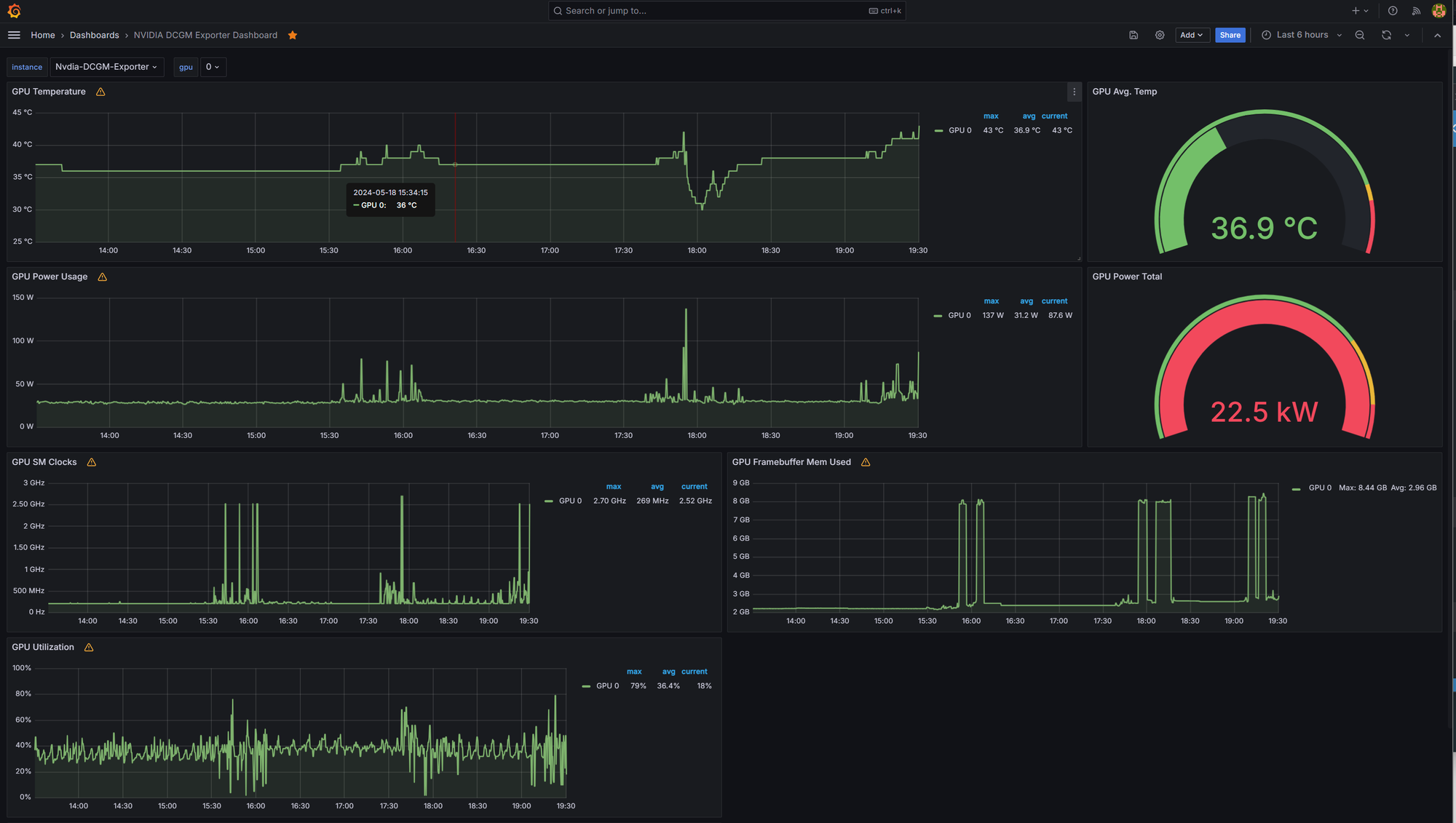Introduction
As technology continues to evolve, it's exciting to see how different components can come together to create something truly unique. In this blog post, I'll be sharing my experience setting up private LLM at home using Ollama Server, running on Windows 11 with an RTX 4090, in combination with a Qnap NAS box, and Kubernetes (K8s) running on an Intel NUC. We'll explore how these components work together to create a seamless and fun experience, all thanks to the power of Open-WebUI, ollama and the might llama3.
The Setup
To start, let's take a look at the setup I used for this project:
- Ollama Server: Running on Windows 11 with an RTX 4090
- Qnap NAS Box: An older model from Qnap, serving as a reliable NFS storage solution for persistent data toK8's.
- Intel NUC: A small but powerful device running Kubernetes (K8s) and acting as the central hub for my containerized applications.
- Open-Web UI: A simple web interface for managing and interacting with my containers, deployed in k8
Setup:
On the Windows-11 Desktop Conveniently called as Agent-11, I have Ollama installed and running as server
ollama pull llama3
ollama serveSince it's for fun along with some productivity as a byproduct, I still use Agent-11 for other activities like writing this blog, so divided running components across.
UI:
I was searching what's the best way to interact with Llama, through Ollama provides some native functionality, Found the awesome popular Open-WebUI and glad I spent some quick time exploring it, Deployment is fun and surprise is how quick i could deploy it to k8 and have it up and running in seconds.
With this YAML file, I was able to deploy my blog using the K8s command-line tool. The Ollama Server and Open-Web UI containers were successfully created and started.
---
apiVersion: v1
kind: Service
metadata:
name: open-webui
namespace: open-webui
spec:
type: NodePort
ports:
- port: 3000
targetPort: 8080
protocol: TCP
selector:
app: open-webui
---
apiVersion: apps/v1
kind: Deployment
metadata:
name: open-webui
namespace: open-webui
spec:
replicas: 1
selector:
matchLabels:
app: open-webui
template:
metadata:
labels:
app: open-webui
spec:
containers:
- name: open-webui
image: ghcr.io/open-webui/open-webui:main
ports:
- containerPort: 8080
env:
- name: OLLAMA_BASE_URL
value: "http://10.0.0.155:11434"
restartPolicy: Always
Since I want to have the data to be persistent, I looked at some documentation and found some info that I am currently using to make data persistent (At least the login and previous asks were persistent).
I do have an 7+ year old Qnap HomeNAS that's been inactive for a while and just got recently powered on when I started to have some k8 fun, Created an NFS share and provided access to HomeLAN which the K8's are part of. I created a folder in that storage called as "open-webui"
1-open-webui-ns-pv-pvc.yaml
---
apiVersion: v1
kind: Namespace
metadata:
name: open-webui
---
apiVersion: v1
kind: PersistentVolume
metadata:
name: open-webui-pv-nfs
spec:
capacity:
storage: 10Gi
accessModes:
- ReadWriteMany
persistentVolumeReclaimPolicy: Retain
storageClassName: nfs
nfs:
path: /k8-storage/open-webui
server: 10.0.0.129
---
apiVersion: v1
kind: PersistentVolumeClaim
metadata:
name: open-webui-pvc-nfs-mount
namespace: open-webui
spec:
accessModes:
- ReadWriteMany
resources:
requests:
storage: 10Gi
storageClassName: nfs # Must match the storageClassName in your PV2-open-webui.yaml
---
apiVersion: v1
kind: Service
metadata:
name: open-webui
namespace: open-webui
spec:
type: NodePort
ports:
- port: 3000
targetPort: 8080
protocol: TCP
selector:
app: open-webui
---
apiVersion: apps/v1
kind: Deployment
metadata:
name: open-webui
namespace: open-webui
spec:
replicas: 1
selector:
matchLabels:
app: open-webui
template:
metadata:
labels:
app: open-webui
spec:
containers:
- name: open-webui
image: ghcr.io/open-webui/open-webui:main
ports:
- containerPort: 8080
env:
- name: OLLAMA_BASE_URL
value: "http://10.0.0.155:11434"
volumeMounts:
- name: open-webui-storage-volume
mountPath: /app/backend/data
restartPolicy: Always
volumes:
- name: open-webui-storage-volume
persistentVolumeClaim:
claimName: open-webui-pvc-nfs-mount
After Deploying above, I am just directly using Nodeport to access the Service
k8admin@k8-ct1:~$ k apply -f 1-open-webui-ns-pv-pvc.yaml
namespace/open-webui created
persistentvolume/open-webui-pv-nfs created
persistentvolumeclaim/open-webui-pvc-nfs-mount created
k8admin@k8-ct1:~$ k apply -f 2-open-webui.yaml
service/open-webui created
deployment.apps/open-webui created
k8admin@k8-ct1:~$ k get svc -n open-webui -o wide
NAME TYPE CLUSTER-IP EXTERNAL-IP PORT(S) AGE SELECTOR
open-webui NodePort 10.99.87.103 <none> 3000:31785/TCP 51s app=open-webuiRef-Diagram:

Once deployed, I could access Open-Web UI, create a User for login and validate it can load models from ollama and select a default model(in may case i have 2 models in ollama and I am using "llama3-8B"

Now once everything is working and as I started to have some fun with llama3, I thought of how to make this more exciting, this is where I started looking on how to integrate metrics for my llama usage. Luckily I have Grafana running in my k8's(CrossRef: K8-Setup Link in future). So I explored some ways to export metrics, though it's not straightforward, once its up and running it's almost invisible and metrics are fun to see how GPU usage is directly proportional to using Open-Webui/ollama.
Ref-Diagram

Grafana Screenshot: The peaks are here I am asking llama3 for help.

References/Tools:-
